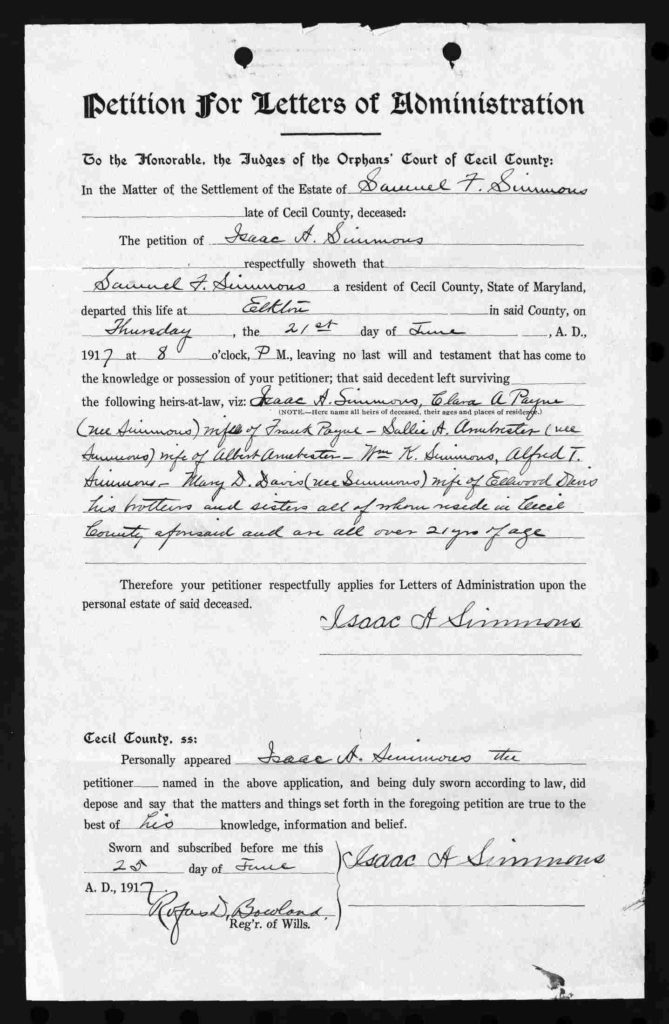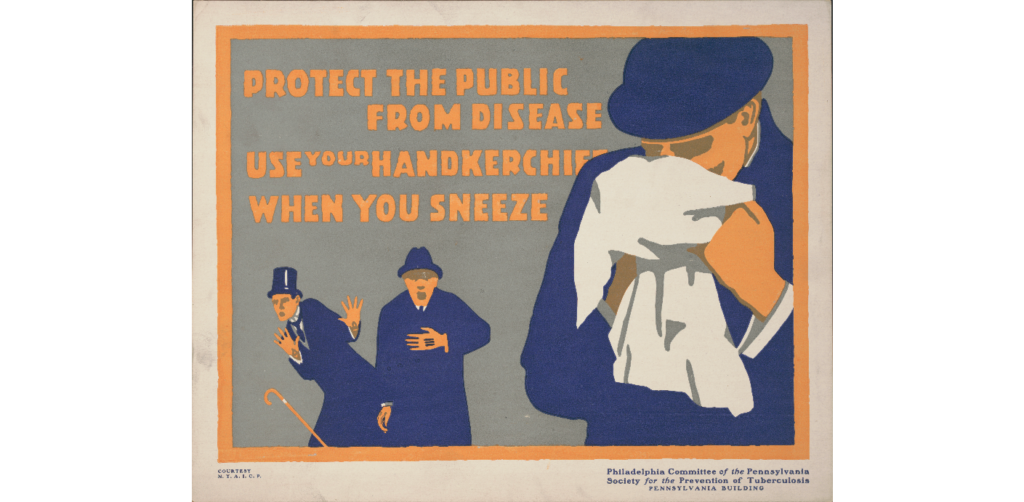On September 18, 1914, Frank Hogan left his home in Waseca, Minnesota, to attend the town fair in Janesville, the next town over. Around 8:30 that night, he was taken abruptly ill on the street, and was carried, unconscious, to his uncle’s house. He was seen by a doctor there, but never recovered consciousness and died around 4 am on September 19, 1914.
There were 3 different obituaries in the local papers. For example, the Janesville Argus, Sept. 23, 1914:
Death of Frank Hogan
Frank Hogan, of Waseca, was taken ill in this place on Thursday afternoon while visiting the fair. He was taken to the home of his uncle, James Joyce, and medical aid secured.
He lingered until about four o’clock Friday morning when he passed away.
The deceased resided with his mother at Waseca. He was a painter by trade. Until a year ago it is said he followed his trade in Minneapolis. He was an efficient workman and an energetic young man. His age was bout thirty years.
The remains were taken to Waseca where the funeral was conducted Saturday morning.
Meanwhile, in the Waseca Journal-Radical, Sept. 23, 1914:
Frank Hogan, son of Mrs. M. Hogan, of this city, died at Janesville last Friday morning. He was taken suddenly ill there the evening before at about 8:30 o’clock. He was taken in an unconscious condition to the home of his uncle, James Joyce, and his mother and sisters were summoned from this city. They were taken by autos to his bedside. He never recovered consciousness and died about 4 o’clock Friday morning.
The remains were taken to his home in this city Friday afternoon.
The funeral was held from the Catholic church Sunday afternoon at 2 o’clock and interment was made in the Catholic cemetery.
Michael Francis Hogan was born in Janesville, and was about 30 years old. He came with his mother and sisters to this city about 18 years ago and except for a few years in the twin cities, this city for the most part has been his home.
He was a painter and paperhanger and was employed in painting a house in this city at the time of his death. He went to Janesville Thursday morning to attend the street fair.
The deceased is survived by his mother, Mrs. M. Hogan, and two sisters, Misses Nellie and Katherine of this city.
The relatives have the sympathy of all in their trouble.
And the Waseca Herald, Sept. 24, 1914:
The people of this community were greatly shocked last Friday morning upon hearing of the death of Frank Hogan, who died very suddenly at Janesville early that morning. He went up to Janesville Thursday morning to attend the fair, and that evening about nine o’clock, suddenly became very ill on the street. He was taken to the home of his uncle, James Joyce, and passed away there about four o’clock Friday morning. Heart trouble was the cause of his death. His mother and sisters were with him when he died.
His remains were brought here Friday afternoon on the two o’clock train and taken to the home of his mother. The funeral took place at the Catholic church Sunday afternoon, Rev. Fr. Treanor officiating, and interment was made in the Catholic cemetery.
Deceased was born in Janesville March 25, 1884, and came to this city when about ten years old, where he has made his home every since. He followed the trade of a painter and paperhanger.
He is survived by his mother and two sisters, Nellie and Katherine, all of this city, who have the sincere sympathy of many friends.
Those from out of town who attended the funeral are: Mrs. Mary Maher of St. Paul; Mr. and Mrs. Patrick Mulcahey of Waterville; Mrs. N. McCormick and daughter, Margaret, of Tracy; Mrs. C.R. Wattles of Sheyenne, N.D.; Mr. and Mrs. T. Sullivan of Ames, Ia.
There are some fascinating details behind the scenes of this sad story.
For instance, in none of these 3 obituaries is his father, Michael Hogan, mentioned. Michael was alive and well, living in Janesville. We don’t see the fact that his mother, Mary Joyce, married Michael Hogan on May 25, 1882, in Janesville, where her family also lived (the uncle to whose home Frank was conveyed on the fateful night was her brother James Joyce). She was 20 years old.
Her early marriage was dogged by tragedy, with two of her younger siblings dying later that same year, one in August and the other in November, and a third sibling dying 2 years later. (Which all smacks of tuberculosis, but I don’t have their death certificates to check.) Then, sometime between the birth of her last child, Mary, in 1890, and the Minnesota census in 1895, she took her oldest 3 children off to Waseca where she went into service as a domestic. In the 1900 census, her mother Margaret Joyce and youngest child Mary had joined them in Waseca, where Mary Hogan the elder was working as a washerwoman and listing herself in the census as widowed.
Meanwhile, Michael was living with his parents. After the deaths of his parents in 1906 and 1908, Michael settled into living with his younger brother John. In 1910, he also listed himself (or perhaps his brother did) as widowed.
And so we are left to wonder what the circumstances were as Mary Hogan worked to support herself, her children (youngest child Mary appears to have died between 1900 and 1910 — notice that she’s not listed as a survivor of Frank either), and her mother. Her mother died in 1913, and perhaps that’s when Frank came come from the big city.
The last thing that is obscured by the glowing obituaries is his cause of death. “Heart trouble” is given as the cause of death, though that’s pretty rare in 30-year-olds. Unfortunately, there are no digital archives online for Minnesota death certificates. Fortunately, I had met a cousin online who was happy poking into death certificates for the family, and who was willing and able to hunt down Frank’s.
I wasn’t sure what to expect as his cause of death, but I absolutely did NOT expect to see “Coma” with a comment next to it: “think he took one dose of cocaine.” In the blank for the contributing cause underneath was written, “Cocaine fiend.”
In the early years of the 20th century, cocaine use had grown in the United States. Inevitably, there was a cultural reaction to its use and the cultural assumptions around its use: that it was a dark urban underground habit, that it was being forced on workers to get more productivity out of them, and even worse, far more racist myths. (For more information, check out the Wikipedia article.) In 1906, the Pure Food and Drug Act required that items containing cocaine add its presence to their labels. And in December 1914, the Harrison Narcotics Tax Act was passed that required that cocaine and narcotics only be dispensed with a doctor’s order.
Michael died in 1928, age 72, in Janesville, and I have to say that his obituary was an exercise in “if you don’t have something nice to say, don’t say anything at all.” Compared to the effulgent obituaries I have read of Michael’s brothers, sisters, and cousins, this was dry bare bones. It leads me to conclude that he was not a popular man, and we can probably guess at a violent temper, given that Mary moved a town away to get her children away from him.
Mary lived until 1949, age 87, and Frank’s 2 sisters, Katherine and Nellie, never married. Katherine died in 1960 in Owatonna, Minnesota, age 73, and Nellie, who had worked briefly as a stenographer in Minneapolis around the time her brother was also up there, died in 1969 in Janesville, age 85.
So perhaps a bit of the big city had followed Frank home to the farmlands of his home. Or perhaps he was just the victim of one dose, taken out of curiosity, because he wanted a bit of an upper to hang out longer at the fair with his friends. It’s another of those mysteries of genealogy, where the hints are tantalizing and the truth has long since died with the players of that particular drama.



